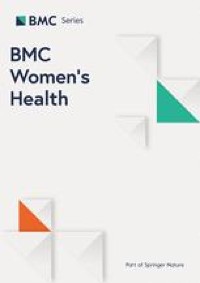UNICEF. Female genital mutilation/cutting: a global concern. UNICEF; 2016.
United Nation Population Fund A. Women and girls, aged 15–49, who have undergone some form of FGM. United Nation Population Fund A; 2020.
World Health Organization. Female genital mutilation hurts women and economies. 2020. www.who.int/news-room/detail/06-02-2020-economic-cost-of-female-genital-mutilation.10.11
Akin-Tunde AO, Bosede BA, Oluwasomidoyin OB, Ayodeji SA. Female genital mutilation/cutting in Africa. Transl Androl Urol. 2017. https://doi.org/10.21037/tau.2016.12.01.
Ganiyu OS, Muhammad AA, Eldia D, Anam H, Ian HR. Overview of female genital mutilation in Africa: are the women beneficiaries or victims? Cureus. 2020;12:e10250.
Akweonogo P, Jackson FE, Appiah-Yeboah S, Sakeah E, Philips FJ. It’s a woman’s thing: gender roles sustaining the practice of female genital mutilation among the Kassena–Nankana of Northern Ghana. Reprod Health. 2021;18:52. https://doi.org/10.1186/s12978-021-01085-z.
WHO, UNICEF, UNFPA, World Bank Group and the United Nations Population Division. Maternal mortality: levels and trends 2000 to 2017. 2017.
Banks E, Meirik O, Farley T, Akande O, Bathija H, Ali M. Female genital mutilation and obstetric outcome: WHO collaborative prospective study in six African countries. Lancet. 2006;367:1835–41. https://doi.org/10.1016/S0140-6736(06)688053.
Ismail EA. Female genital mutilation survey in Somaliland at the Edna Adan maternity and teaching hospital. Edna Adan Maternity Hospital; 2009.
WHO. Study group on female genital mutilation and obstetric outcome? Female genital mutilation and obstetric outcome: WHO collaborative prospective study in six African countries. Lancet. 2006;367:1835-1841.2.
Yasin BA, Al-Tawil NG, Shabila NP, Al-Hadithi TS. Female genital mutilation among Iraqi Kurdish women: a cross-sectional study from Erbil city. BMC Public Health. 2012;13(809):1–8.
Antabe R, Sano Y, Anfaara WF, Kansanga M, Chai X, Luginaah I. Antenatal care utilization and female genital mutilation in Kenya. Sex Cult. 2019;23:705–17. https://doi.org/10.1007/s12119-019-09595-6.
Goffman E. Stigma. Notes on the management of spoiled identity. Penguin; 1968.
Corsi DJ, Neuman M, Finlay JE, Subramanian S. Demographic and health surveys: a profile. Int J Epidemiol. 2012;41(6):1602–13.
Aliaga, A., & Ruilin, R. Cluster optimal sample size for demographic and health surveys. Paper presented at the 7th international conference on teaching statistics—ICOTS. 2006.
Von Elm E, Altman DG, Egger M, Pocock SJ, Gøtzsche PC, Vandenbroucke JP, Initiative S. The strengthening the reporting of observational studies in epidemiology (STROBE) statement: guidelines for reporting observational studies. Int J Surg. 2014;12(12):1495–9.
Ahinkorah BO, Seidu AA, Agbaglo E, Adu C, Budu E, Hagan JEJ, Schack T, Yaya S. Determinants of antenatal care and skilled birth attendance services utilization among childbearing women in Guinea: evidence from the 2018 Guinea Demographic and Health Survey data. BMC Pregnancy Childbirth. 2021;21:2. https://doi.org/10.1186/s12884-020-03489-4.
Singh P, Singh KK, Singh P. Maternal health care service utilization among young married women in India, 1992–2016: trends and determinants. BMC Pregnancy Childbirth. 2021;21(1):1–3.
Yaya S, Zegeye B, Ahinkorah BO, Seidu AA, Ameyaw EK, Adjei NK, Shibre G. Predictors of skilled birth attendance among married women in Cameroon: further analysis of 2018 Cameroon Demographic and Health Survey. Reprod Health. 2021;18(1):1–2.
Rai RK, Singh PKO, Singh L. Utilization of maternal health care services among married adolescent women: insights from the Nigeria Demographic and Health Survey, 2008. Women’s Health Issues. 2012;22(4):407–14.
Sano Y, Konkor I, Antabe R, Ragetlie R. Physical intimate partner violence justification and female genital mutilation in Kenya: evidence from the demographic and health survey. J Aggress Maltreatment Trauma. 2021;30:1–1.
Bell A, Fairbrother M, Jones K. Fixed and random effects models: making an informed choice. Qual Quant. 2019;53(2):1051–74.
Al Kibria GM, Ghosh S, Hossen S, Barsha RA, Sharmeen A, Uddin SI. Factors affecting deliveries attended by skilled birth attendants in Bangladesh. Maternal Health Neonatol Perinatol. 2017;3(1):1–9.
Choulagai BP. Skilled birth attendant services in Nepal: overcoming barriers to utilization. 2017.
Sakeah E, Debpuur C, Oduro AR, Welaga P, Aborigo R, Sakeah JK, Moyer AC. Prevalence and factors associated with female genital mutilation among women of reproductive age in the Bawku municipality and Pusiga District of northern Ghana. BMC Womens Health. 2018;18:150. https://doi.org/10.1186/s12905-018-0643-8.
Hess RF, Weinland JA, Saalinger NM. Knowledge of female genital cutting and experience with women who are circumcised: a survey of nurse-midwives in the United States. J Midwifery Women’s Health. 2010;55(1):46–54. https://doi.org/10.1016/j.jmwh.2009.01.005.
Kimani S, Kabiru CW, Muteshi J, Guyo J. Exploring barriers to seeking health care among Kenyan Somali women with female genital mutilation: a qualitative study. BMC Int Health Hum Rights. 2020;20(1):1–2.
Mbanya VN, Terragni L, Gele AA, Diaz E, Kumar BN. Barriers to access to the Norwegian healthcare system among sub-Saharan African immigrant women exposed to female genital cutting. PLoS ONE. 2020;15(3):e0229770.
Ayele GS, Melku AT, Belda SS. Utilization of skilled birth attendant at birth and associated factors among women who gave birth in the last 24 months preceding the survey in Gura Dhamole Woreda, bale zone. Southeast Ethiop BMC Public Health. 2019;19(1):1–14.
Berg RC, Denison EA. tradition in transition: factors perpetuating and hindering the continuance of female genital mutilation/cutting (FGM/C) summarized in a systematic review. Health Care Women Int. 2013;34(10):837–95.
Van Rossem R, Dominique MD, Gage AJ. Women’s position and attitudes towards female genital mutilation in Egypt: a secondary analysis of the Egypt demographic and health surveys 1995–2014. BMC Public Health. 2015;15:874.
WHO. Sexual and reproductive health: health risks of female genital mutilation (FGM). 2017. http://www.who.int/reproductivehealth/topics/fgm/health_consequences_fgm/en/.
Ayele GS, Melku AT, Belda SS. Utilization of skilled birth attendant at birth and associated factors among women who gave birth in the last 24 months preceding the survey in Gura Dhamole Woreda, Bale zone, southeast Ethiopia. BMC Public Health. 2019;19:1501. https://doi.org/10.1186/s12889-019-7818-6.
Mezmur M, Navaneetham K, Letamo G, Bariagaber H. Individual, household and contextual factors associated with skilled delivery care in Ethiopia: evidence from Ethiopian demographic and health surveys. PLoS ONE. 2017;12(9):e0184688. https://doi.org/10.1371/journal.pone.0184688.
Dickson KS, Amu H. Determinants of skilled birth attendance in the northern parts of Ghana. Adv Public Health. 2017;2017:1–8. https://doi.org/10.1155/2017/9102808.
Yaya S, Bishwajit G, Gunawardena N. Socioeconomic factors associated with choice of delivery place among mothers: a population-based cross-sectional study in Guinea-Bissau. BMJ Glob Health. 2019;4:001341.
Solanke BL, Rahman SA. Multilevel analysis of factors associated with assistance during delivery in rural Nigeria: implications for reducing ruralurban inequity in skilled care at delivery. BMC Pregnancy Childbirth. 2018;18:438. https://doi.org/10.1186/s12884-018-2074-9.
Nyongesa C, Xu X, Hall JJ, Macharia WM, Yego F, Hall B. Factors influencing choice of skilled birth attendance at ANC: evidence from the Kenya demographic health survey. Pregnancy Childbirth. 2018;18:88. https://doi.org/10.1186/s12884-018-1727-z.
Dapaah JM, Nachinaab JO. Sociocultural determinants of the utilization of maternal health care services in the Tallensi District in the Upper East Region of Ghana. Adv Public Health. 2018. https://doi.org/10.1155/2019/5487293.
Ahmed S, Creanga AA, Gillespie DG, Tsui AO. Economic status, education and empowerment: implications for maternal health service utilization in developing countries. PLoS ONE. 2010;5:11190.
Adhikari R. Effect of Women’s autonomy on maternal health service utilization in Nepal: a cross sectional study. BMC Womens Health. 2016;16:26.
Corroon M, Speizer IS, Fotso J-C, Akiode A, Saad A, Calhoun L, Irani L. The role of gender empowerment on reproductive health outcomes in urban Nigeria. Matern Child Health J. 2014;18:307–15.
Ganle JK, Obeng B, Segbefia AY, Mwinyuri V, Yeboah JY, Baatiema L. How intra-familial decision-making affects women’s access to, and use of maternal healthcare services in Ghana: a qualitative study. BMC Pregnancy Childbirth. 2015;15:173.
Morzaria M, Ahmed Z. Education and awareness make progress against female genital cutting in Kenya. Kenya. 2006. https://www.unicef.org/protection/kenya_35433.html.
Sado L, Spaho A, Hotchkiss DR. The influence of women’s empowerment on maternal health care utilization: evidence from Albania. Soc Sci Med. 2014;114:169–77.
Adu J, Tenkorang E, Banchani E, Allison J, Mulay S. The effects of individual and community-level factors on maternal health outcomes in Ghana. PLoS ONE. 2018;13(11):e0207942. https://doi.org/10.1371/journal.pone.0207942.
Ochako R, Jean-Christophe F, Lawrence I, Anne K. Utilization of maternal health services among young women in Kenya: insights from the Kenya Demographic and Health Survey, 2003. BMC Pregnancy Childbirth. 2011;11:1.
Amin R, Shah NM, Becker S. Socioeconomic factors differentiating maternal and child health-seeking behavior in rural Bangladesh: a cross-sectional analysis. Int J Equity Health. 2010;9:9.
Singh L, Rai RK, Singh PK. Assessing the utilization of maternal and child health care among married adolescent women: evidence from India. J Biosoc Sci. 2011;44:1–26.






More Stories
Exploring the Magic of Sapphire Engagement Rings in Birmingham’s Jewelry Quarter
Unlocking the Expertise of Women’s Care Specialists: A Comprehensive Guide
Women’s Birth and Wellness Center: A Comprehensive Guide